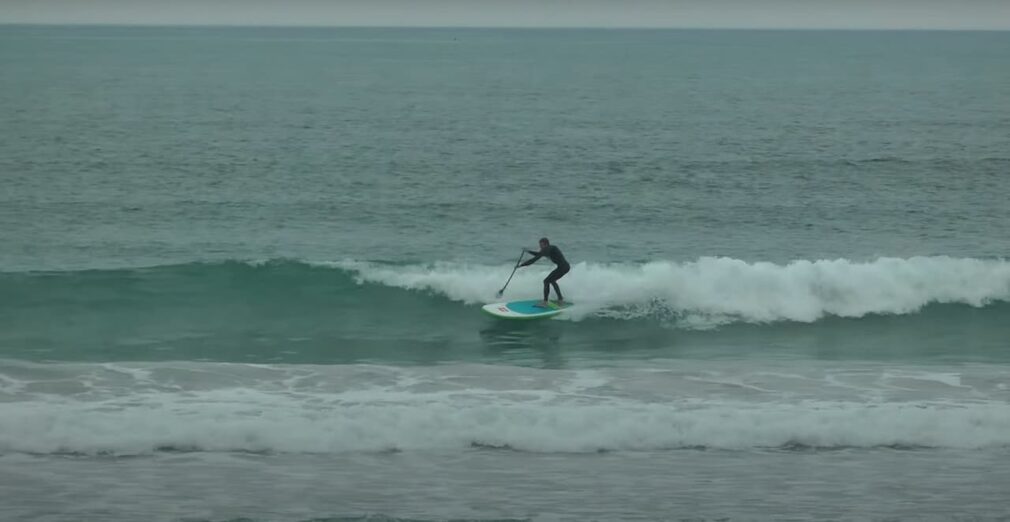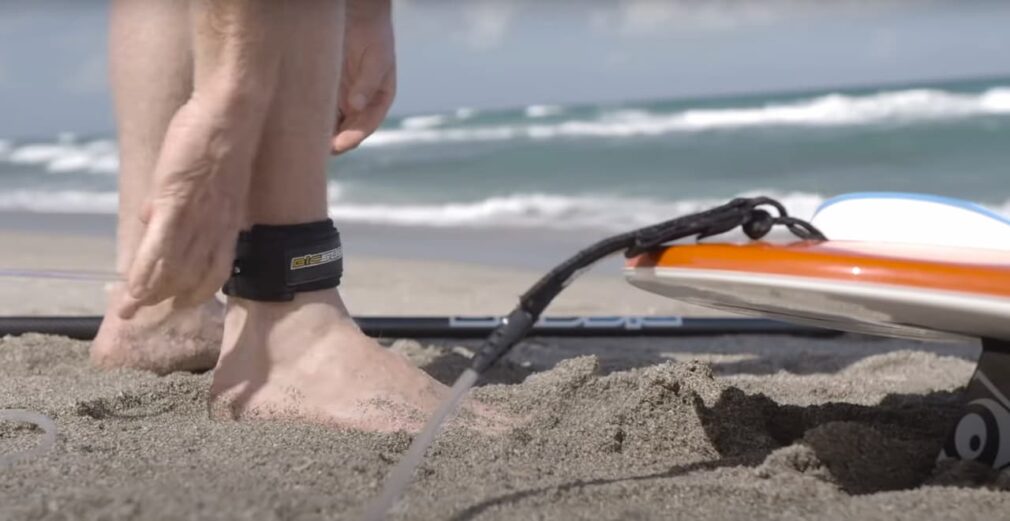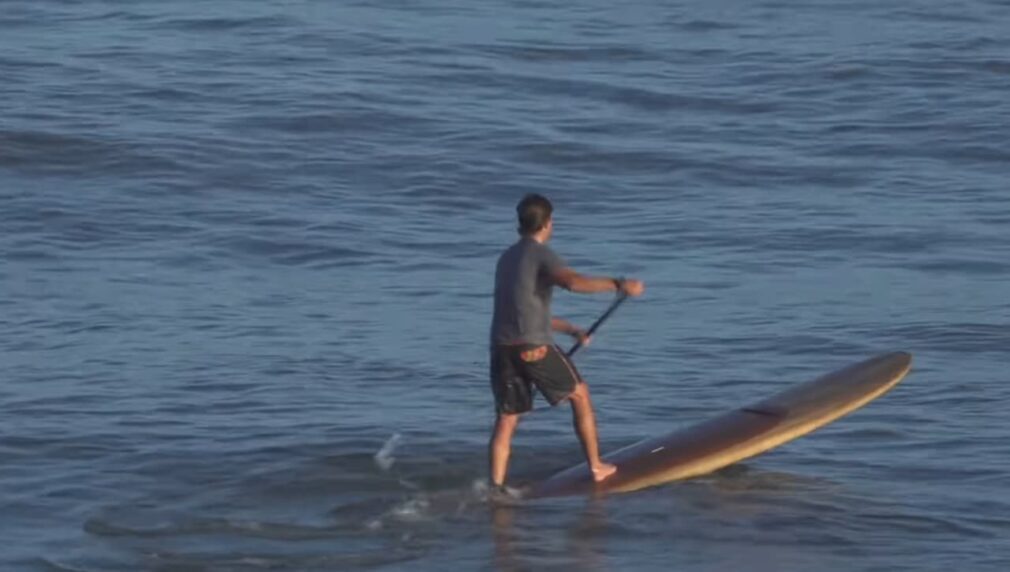Does a stand-up paddleboard (SUP) look like a vessel to you? Well, in some countries it might be classified as one, so adhere to the water-road rules in your respective area.
In the absence or lack of such layered rules, embark on a SUP journey safely with the following suggestions as a reminder or a bonus to your common sense and due diligence (there are just some tips to keep in mind and not a full-fledged guide to SUP safety).
First and foremost, find out the local regulations in the area where you’ll be SUPing. If deemed necessary by local authorities, always wear a life vest and/or a leash that attaches your board to your ankle. Check the weather conditions for the day of your planned paddleboarding adventure.
It is also important to know your limitations. If you are not a strong swimmer, it is best to stay within shallow waters or areas where there will be people around in case you need help. Don’t go out too far alone. And, finally, avoid paddling at night as much as possible.
SUP surfing is a great way to enjoy the water and stay active. But, like any other sport, there are risks involved. One of the most common questions we are asked is whether or not you need a helmet for SUP surfing. In this blog post, we will answer that question and give you some tips on staying safe while enjoying this popular activity.
Should Stand-Up Paddlers Wear Helmets?
The quick answer is no, you don’t need to wear a helmet while stand-up paddle surfing. However, we do recommend wearing one if you are new to the sport or plan on doing any SUP surfing in waves larger than waist high.
Wearing a helmet will not only protect your head from any bumps or falls, but it will also help keep your head warm in colder water temperatures. If you are unsure about whether or not to wear a helmet, always err on the side of caution and go with the PFD (personal floatation device) and leash combo instead. This way you will at least have some protection if you do fall off your board.

How to Choose a Surfing Helmet
Fit/Size
- To get the proper fit, measure the circumference of your head just above your eyebrows. Most helmets will have a size chart listed in centimeters or inches to help you select the right size;
- Once you have your measurement, try on different helmets until you find one that fits snugly all the way around without being too tight. The helmet should sit level on your head and not rock back and forth or side to side;
- If you’re still unsure about sizing, bring a tape measure with you when shopping so you can double-check;
Safety Standards
- When choosing a helmet, always look for one that has been certified by the US Coast Guard. This certification means that the helmet meets certain safety standards;
- You should also look for helmets that have been certified by the American Canoe Association (ACA) or another reputable organization;
If you are unsure about a helmet’s safety features, always err on the side of caution and choose another one.
Weight and Bulk
One of the main concerns with wearing a helmet while stand-up paddle boarding is the weight and bulk. A helmet can weigh down your head and make it difficult to keep your balance. Additionally, a bulky helmet can be uncomfortable and impair your vision. If you are worried about the weight and bulk of a helmet, consider a lightweight and low-profile option.
Some people may argue that helmets are not necessary for SUP surfing. However, given the fact that there is always a risk of falling and hitting your head on the boards or in the water, we believe that it is better to be safe than sorry.

FAQ
Should I wear a surfing helmet?
The quick answer is no, you don’t need to wear a surfing helmet while stand-up paddle boarding. Most people don’t wear helmets while SUP surfing.
However, that doesn’t mean that you shouldn’t consider wearing a helmet. If you are new to the sport or not confident in your ability to stay upright, a helmet can give you some peace of mind.
Wearing a helmet can also be a good idea if you are paddling in an area with lots of rocks or other obstacles that could cause head injuries if you fell.
Ultimately, whether or not to wear a helmet while SUP surfing is up to you. If you feel more comfortable and safer with a helmet on, then go for it. But don’t feel like you need to wear one just because other people are.
Can I use SUP for surfing?
Yes, you can use a SUP for surfing. However, you will need to purchase a special surfboard attachment if you want to do this. The good news is that many companies that sell SUPs also sell these attachments.
If you are going to be using your SUP for surfing, you will need to purchase a helmet. This is because there is a lot of potential for head injuries when surfing. Many people choose to wear wetsuits when they are surfing as well. This helps protect them from the sun and from getting scraped up by the waves.
Is SUP surfing easier than surfing?
No, not necessarily. While stand-up paddle boarding is a relatively new sport, it has already developed a passionate following. And like any sport, some excel at SUP surfing and those who don’t.
That said many people find that they can catch waves more easily on a SUP than on a surfboard. This is because the extra buoyancy of the SUP helps keep you afloat, even when you’re paddling for waves.
So if you’re thinking about trying SUP surfing, don’t be discouraged if it takes you a little while to get the hang of it. With practice, you’ll be ripping waves in no time!
And one last word of advice: always wear a life jacket and leash when paddle boarding, even if you’re a strong swimmer. Because once you’re out in the water, anything can happen. Better to be safe than sorry!
Do people surf with helmets?
Yes, some people do surf with helmets and there are even a few companies that make helmets specifically for SUP surfing. However, the consensus seems to be that helmets are not necessary for this particular activity. The main reason cited is that SUP surfing is relatively slow compared to other types of surfing and therefore the risks are not as high.
Additionally, many people feel that they have better balance and control on their boards when they are not wearing a helmet. Ultimately, the decision of whether or not to wear a helmet while SUP surfing is up to the individual.

What size SUP should I get for surfing?
The first thing you need to consider when choosing a SUP for surfing is the size. You want a board that’s big enough to float you and provide stability, but not so big that it’s unwieldy in the waves. A good rule of thumb is to get a board that’s about 30-35% of your body weight.
For example, if you weigh 200 pounds, a board that’s around 60-70 pounds would be ideal.
Another factor to consider is the shape of the board. Surfboard shapes are generally categorized as short boards, longboards, or fish boards.
Short boards are the most common type of surfboard and are great for maneuverability and speed. Longboards are more stable and easier to paddle, making them a good choice for beginners. Fish boards are a cross between the two, and are ideal for intermediate surfers who want a board that’s versatile enough to handle different types of waves.
Once you’ve decided on the size and shape of your board, it’s time to choose a paddle. Again, you’ll want to consider your weight and the type of waves you’ll be paddling in when making your decision. A heavier paddle will give you more power but may be difficult to maneuver in smaller waves.
A lighter paddle will be easier to maneuver but won’t provide as much power. Ultimately, it’s up to you to decide what weight paddle feels comfortable for you.
How do you paddle SUP through a wave?
The great thing about stand-up paddle surfing is that it gives you the ability to catch waves that you wouldn’t be able to surf on a traditional board. But, because you’re standing on your paddleboard, it can be difficult to stay balanced and upright when paddling through a wave.
One technique is to lie down on your board and paddle out with the paddle in front of you. This may work in lesser waves, but big waves will knock you over and wash you back in. The best method to confront large waves from a lying down position is to get off your board, push down on the tail, and push the board over the foam as you dive beneath the foam while keeping your paddle.
The second option is to kneel and ride over the foam on a hard stroke as you hit the foam, leaning back and taking a firm stroke. This approach will work in smaller waves, but it won’t be very effective when waves grow larger than three feet tall.
The third, and most efficient, way to exit the surf is to stand up and paddle, but you must first learn how to punch over the white water. When paddling out through the surf, you’ll want to assume a hybrid stance with your front foot pointed ahead and your back foot angled sideways.
You’ll also want to have your feet slightly staggered; one towards the nose and one somewhat towards the tail. To make it simpler to pluck the nose over the top of the waves when punching over the top of them, stand a bit further back on your board.
Does stand-up paddle boarding build muscle?
Yes, stand-up paddle boarding is a great workout because it uses almost every muscle in your body. Your arms, shoulders, back, and core all work to keep you balanced and upright as you paddle through the water.
And, because you’re standing on an unstable surface (the paddleboard), your leg muscles also have to work hard to keep you from tipping over. All of this makes stand-up paddle boarding an excellent full-body workout. Plus, because it’s so low-impact, it’s a great exercise for people of all ages and fitness levels.







